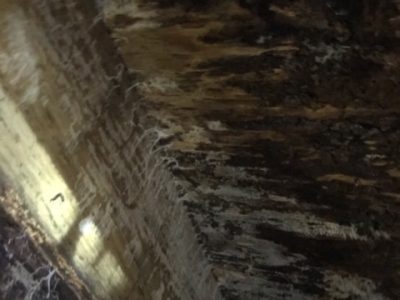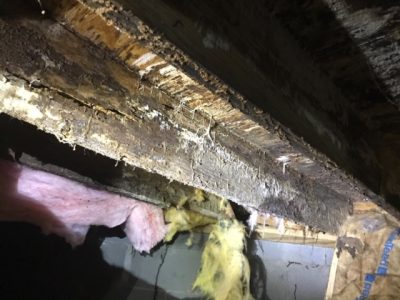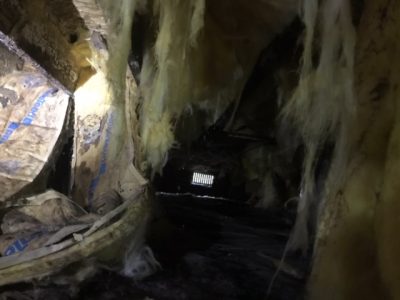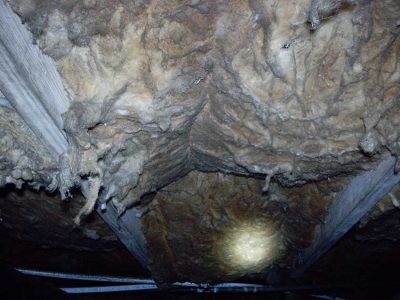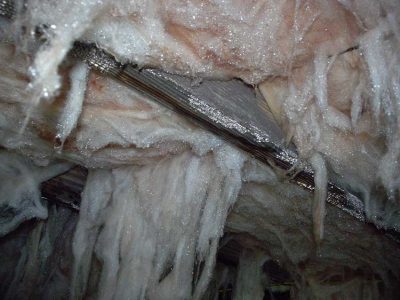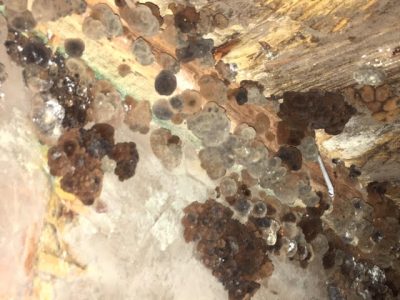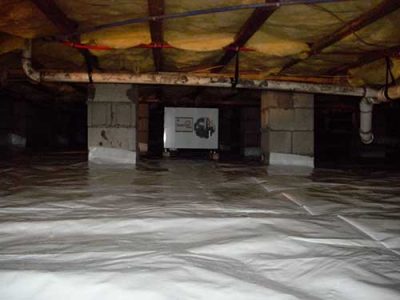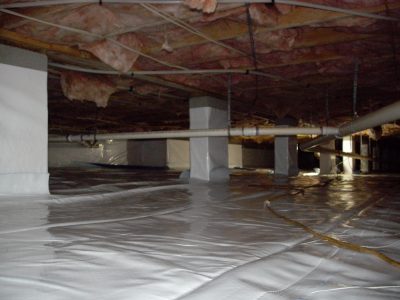Our Case Study Problems
To truly understand a solution, one must truly know how the problem is caused. What we have found through our case studies is pure science.
There are four forms of intrusion to the crawlspace and knowing which or how many affects the crawlspace, will determine which form of remediation is needed. Contact us if you have further questions about how these concepts can help your Wilmington, NC home.
Ground Water
This form of intrusion is when water stands or rises in the crawlspace due to high water tables or poor drainage.
Bulk Water
This form of intrusion is common when the crawlspace surface is below grade from the outside ground level. This situation allows the water to travel into the crawlspace.
Overhead Intrusion
This form of intrusion is caused by leaks in the plumbing or drainage pipes.
Temperature Changes
This is the most common form of intrusion. When cool air meets warm air, moisture is created. Here in the south, for every one degree the temperature cools, it displaces 2.2% of moisture.
Frequently Asked Questions
Once my crawlspace is sealed and conditioned, will I need floor insulation?
If the existing insulation is removed due to damage or saturation, we suggest leaving it out during the drying process and monitor the temperature differences between the crawlspace and the first floor of the home. If those temperatures are the same or slightly different, there would be minimal or no value to reinstall.
How does it stay so mild under your home once sealed? Without a convectional air exchange from the outside, your crawlspace “banks” the ambient earth temperature as a baseline. The dehumidifier moves air across that temperature and warms it up. Your home’s stack effect pulls that energy up to the floor level.
Although there are parts of the country where the winters are extremely cold and the conduction value of the snow and ice creates a different need for foundation wall insulations, the warmer winter states don’t seem to have that issue.
What’s the Difference between a Sealed Crawlspace and an Encapsulated Crawlspace?
To some this may just be jargon but there is a scientific difference. Seal system means air and earth moisture intrusion have been sealed and a dehumidifier is controlling both relative humidity and temperature. Encapsulated crawlspace means wrapping foundation walls, piers and seaming the earth moisture barrier to each. This is a more detailed and costly approach but sometimes necessary and the most effective form of remediation for your home.
- Sealed
- Encapsulated
When Should I Seal My Crawlspace?
When your crawlspace is unable to control its temperature and relative humidity, it’s time to take it out of Mother Nature’s hands and put it in your own hands. You must first rule out bulk and ground water! Once you have established it as an air intrusion problem, you are in need of a sealed system.
When do I need an Encapsulation?
What’s the difference between a Moisture Barrier and a Vapor Barrier?
How thick of a Moisture Barrier should I use?
The building code, which is the “minimum”, requires 6 mil. However it is our opinion that what the moisture barriers are made of and how they are made are more important. For example: A 10 mil, 3-ply poly reinforced plastic would be stronger then a single ply 12 mil poly plastic. Here in the south, we have a higher water table which contributes to a high acidity and microbial rich topsoil. When installing a moisture barrier which comes in contact with the soil, an antimicrobial plastic is a better option for your home. Antimicrobial plastics will not support mold or fungal growth which can not only break the plastic down over time but cause air quality issues as well.
What is Wood Moisture content?
TWood moisture content is the percentage of water that has permeated the wood. The higher this percentage the higher the possibility for fungal, mold, and termite intrusion. There is a direct connection between the wood moisture levels and the relative humidity levels in the air.If you control the relative humidity you control the wood moisture content.



